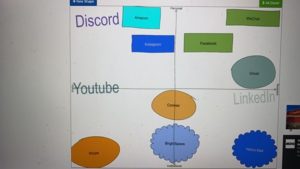Notable people use social media to connect with people, market brands, strengthen their fan base, acquire feedback on their work, express themselves, and create personal and public awareness.
Being in the public eye has lots of benefits. First, one gets to be recognized both locally and internationally, which tend to boost their self-esteem significantly, thus giving them the confidence to grow. Second, a public figure typically enjoys a huge supporting fan base. A majority of the fans of public figures are always willing to support them by sharing with them their moments of happiness and sadness and promoting their work. Third, a public figure tends to get better treatment wherever they go.
A public figure, such as a government official, is commonly susceptible to intrusive and unwanted attentions. This behavior is usually as a result of stalkers angrily accusing the public figure for resentful motivation, intimacy seeking motivation, or psychotic illness. Consequently, the stalking behavior inflicts psychological damage to both the victim and the perpetrator.
Having social media that is directly linked to employment is important because it helps save on time and costs since the accounts are usually readily customized for professional purposes. Additionally, such social media comprises many groups that are committed to specific professional topics, thus making it easy for job seekers to meet potential employers.
One can build PLN that can always be relied on by: joining an online community comprising people with the same interests where they can share ideas and contact people for direct feedback; maintaining the spirit of collaboration as a driving force, where they can work together and be resourceful; asking questions; acknowledging the contributions of people in their network; creating a landing page that eases access by visitors; and designing a personal and professional account.
Veteran storytellers reduce risk in sharing misinformation by employing the use of fact-checking services to promote information from reliable sources, trace misinformation, and filter out false news (Hirst, 2018). In addition, veteran storytellers look at social media critically and take time to confirm the shared information when skeptical. They also ensure that false information is removed from their online networks promptly by requesting the individuals responsible for the misinformation to delete the misleading post.
References
Hirst, M. (2018). Navigating social journalism: A handbook for media literacy and citizen journalism. Routledge.
Jawed, S., Mahboob, U., & Yasmeen, R. (2019). Digital professional identity: Dear Internet! Who am I?. Education for Health, 32(1), 33.
Orsatti, J., & Riemer, K. (2015). Identity-making: A multimodal approach for researching identity in social media.

Recent Comments